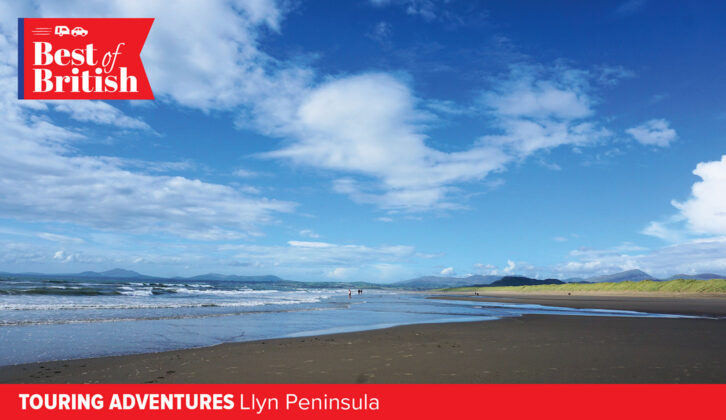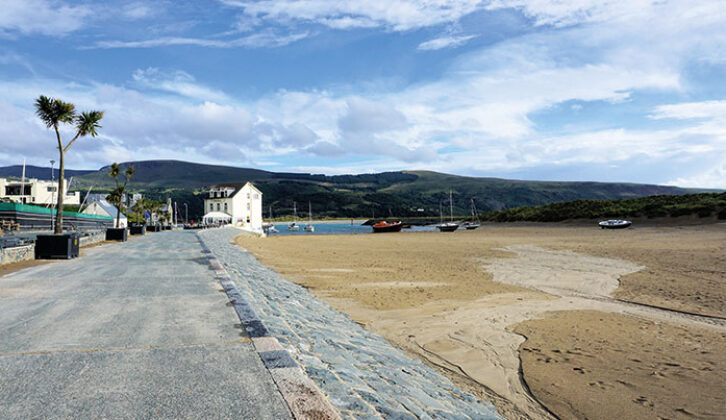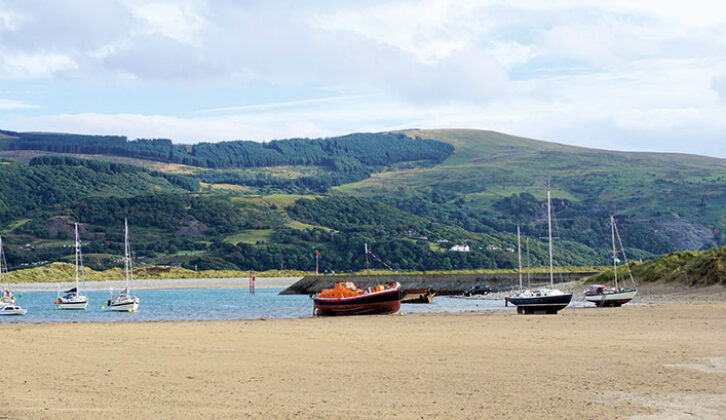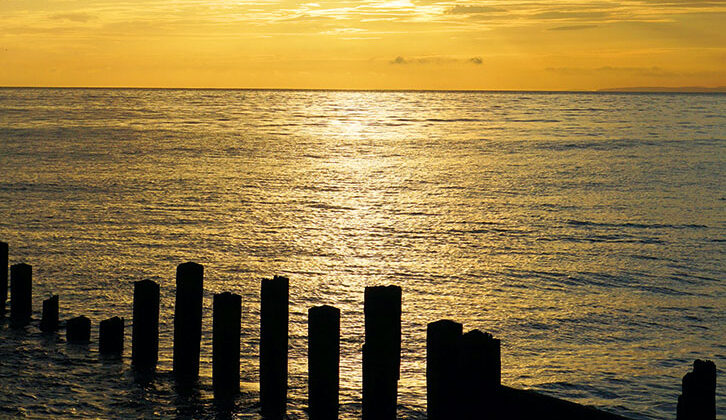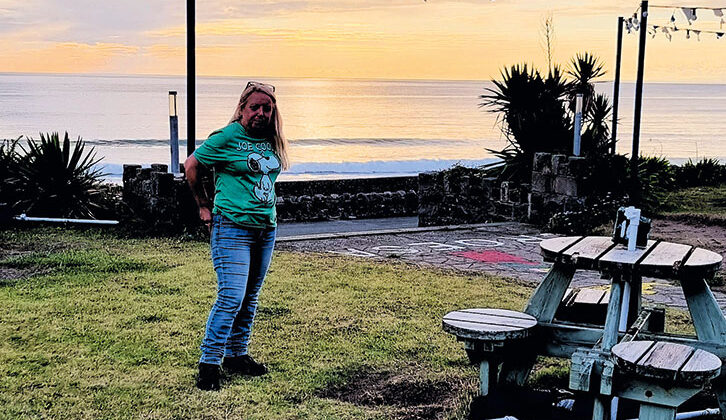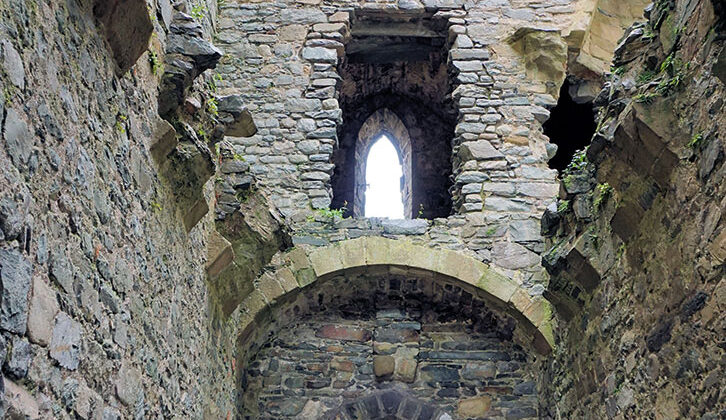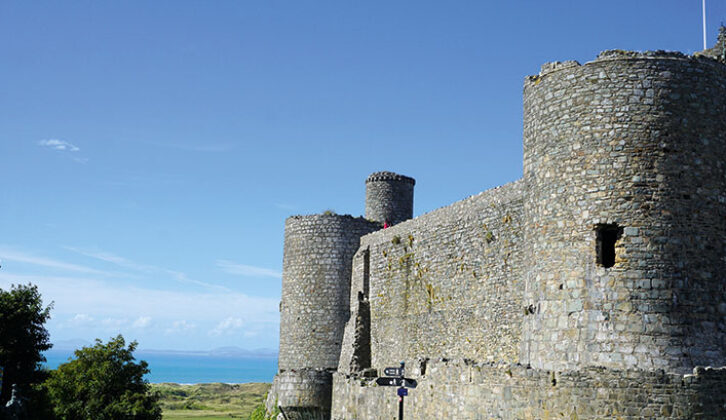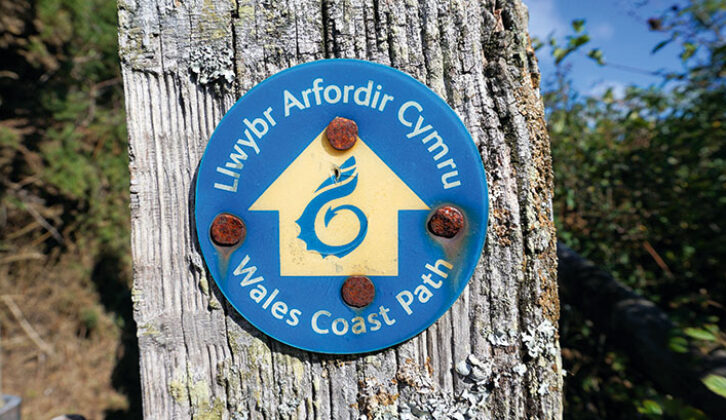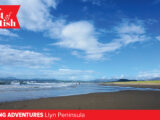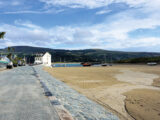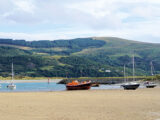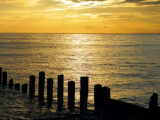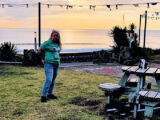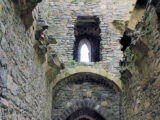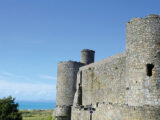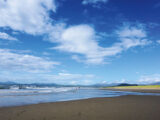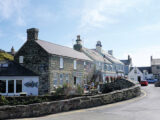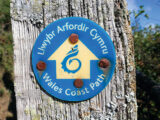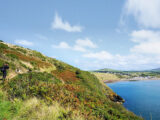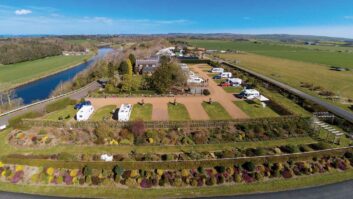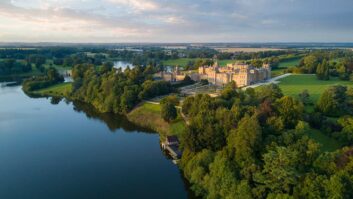Normally, as darkness falls when we are at a campsite, we’re thinking about retreating indoors, perhaps with a game of Uno or a good book. But not tonight in the Llŷn Peninsula.
Tonight, we are sitting outside our van, witnessing a glorious moon rising over the bay, just yards from our pitch.
The scene constantly changes while it reaches its full height and as the reflection over the water lengthens and brightens, I can’t draw my eyes away. It is magical – and it is free! Okay, I had to pay for the bottle of wine I was enjoying at the same time, but this is camping as I enjoy it.
Nothing fancy, no distractions, just nature. I was there, with husband Ro and puppy Willow, at Dwyros Campsite, just above Aberdaron on the westernmost tip of the beautiful Llŷn Peninsula.
Actually, glorious skies were something of a theme on this trip. We started with a few days at Hendre Mynach Touring Caravan and Camping Park, a short walk from the seaside town of Barmouth on the western edge of the Snowdonia National Park. Here, we were treated to dazzling sunsets over the sea, and all just across the road from the campsite (take a look at our best caravan park in Wales guide if you’re after some more touring destination ideas).
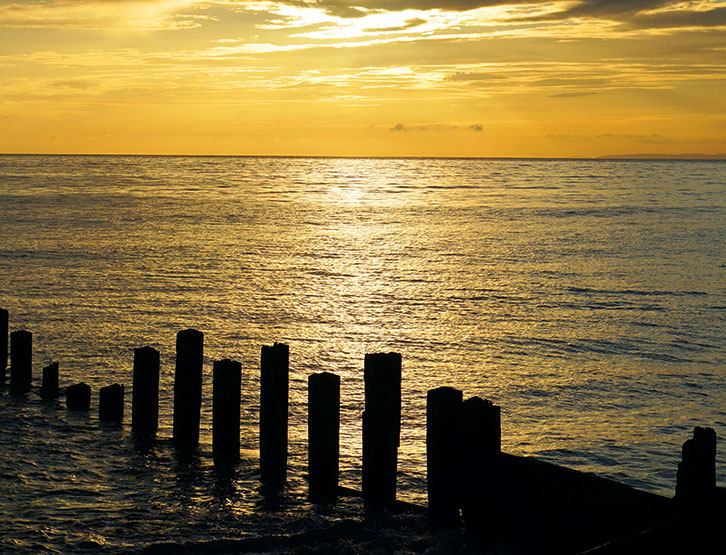
Harbour history
Arriving in the late afternoon after a long journey from Buckinghamshire, we were glad to stretch our legs and take in some sea air, while Willow enjoyed a run on the dog-friendly section of the beach.
In summer, there is a land train from the site to the town, but in September, we were reliant on our own feet. But that was no hardship – an easy 20-minute stroll along the promenade or the sands of the Blue Flag beach brings you into town.
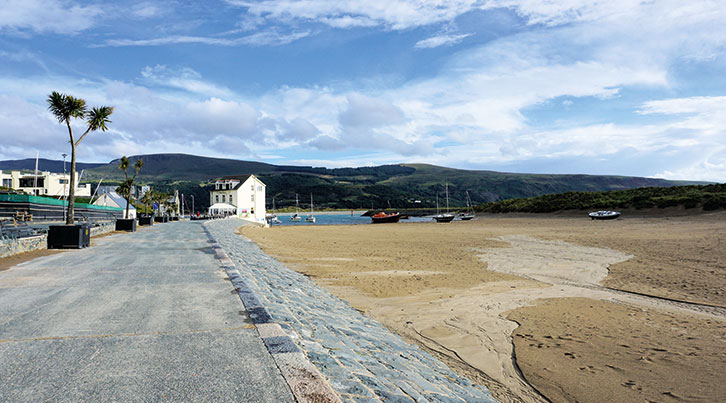
At the end of the promenade, we arrived at the picturesque old harbour, which has a tale or two to tell. Not least is the story involving the ill-fated RMS Titanic and one of its officers, Harold Lowe. Harold grew up in Barmouth, with ambitions to go to sea. On that infamous night in 1912, he was a junior officer aboard the Titanic and was honoured for his bravery in returning with a lifeboat to search for survivors in the freezing waters.
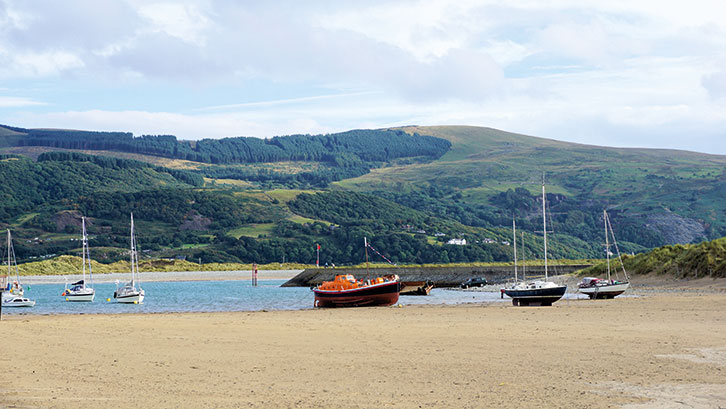
Much older history can be seen at the Bronze Bell Museum, housed in a building that dates all the way back to 1460.
As the afternoon was drawing on, we decided to leave exploring the town itself for another day, but couldn’t resist making the most of the last of the sunshine with a pint in the beer garden of The Last Inn, by the harbour. This venerable hostelry also dates from the 15th century and still has oak beams and cosy fireplaces.
Walking back to our pitch a short while later, we were treated to that spectacular sunset, the oranges and purple-greys reflected in the sea and the wet sands.
Just outside the campsite, we stood at the harbour wall and took it all in. Photos don’t do it justice, but I wasn’t the only one trying to capture it, nonetheless.
Next morning, the sea was a bit stormy, which only added to its character, and we were soon off for a day out. It is apparently possible to walk all the way to Harlech at low tide, but figuring this would take around four hours, we decided on the easier, drier, and much faster (20 minutes) option of driving there.
Under siege
Harlech’s main claim to fame is, of course, its magnificent castle. Built by Edward I and now a World Heritage Site, Harlech Castle commands great views over the surrounding countryside and peaks of Snowdonia, from its lofty position above the dunes. It is amazing to think it has stood for so many years – even more so when you discover it has been the subject of several sieges during its long history.
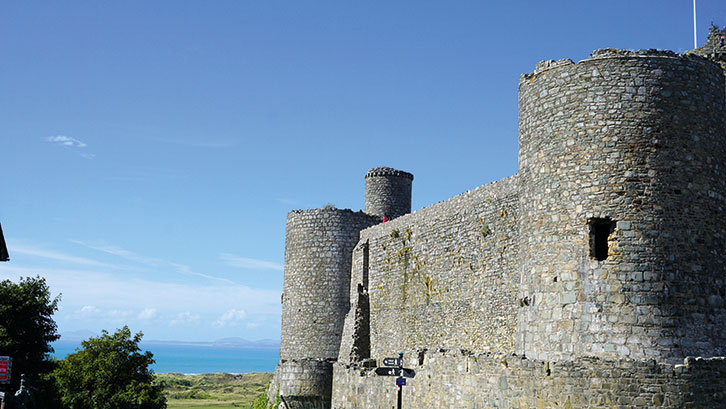
One of these happened in 1408, when Harry of Monmouth, later Henry V, retook the castle following its capture during an uprising a few years earlier by Owain Glyndŵr, who fought against English rule and crowned himself Prince of Wales.
Some would have you believe this was the origin of the rousing Welsh anthem, ‘Men of Harlech’. However, it is more likely that the song originates from a later siege, during the Wars of the Roses.
We spent an interesting couple of hours exploring the castle and the town before heading to the nearby beach. A short walk through the dunes brought us out onto a lovely stretch of sand, backed by yet more dunes in this designated National Nature Reserve, with views of Shell Island.
Despite scanning the waters, we were unable to spot any sign of the dolphins and porpoises that frequent the area.
The walk was no less enjoyable for that, mind you – the perfect way to work up an appetite for dinner back at Hendre Mynach, before a refreshing night’s sleep.
Stroll along the prom
The next day was sunny, and we enjoyed breakfast al fresco at the Promenade Café, just outside the campsite entrance, before strolling along the prom to Barmouth, to find out what the town had to offer away from the sandy beach.
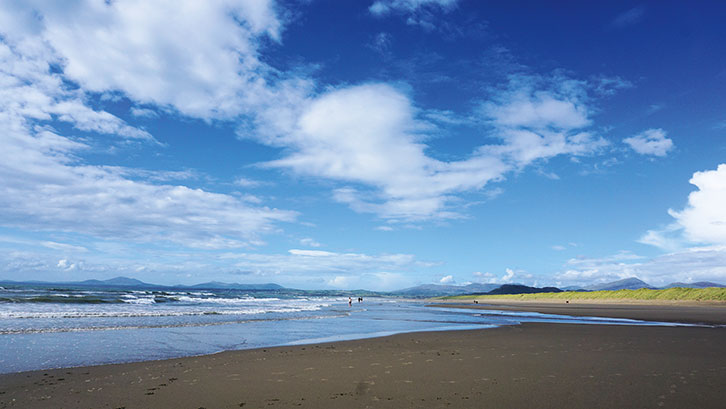
We picked up the Heritage Trail leaflet from the information centre and set off in search of Henry Tudor, the Victorians, the Sailors’ Institute, and the founding of the National Trust.
Walking from the cobbled streets of the Old Town to the top of Dinas Oleu hill not only provides plenty of breathtaking views over Cardigan Bay, but also gives you access to the first area of land to be donated to the fledgling National Trust in 1895. Thank you, Fanny Talbot! This route (which took us around two hours) does get a little steep; it’s worth it for those views but be wary if you have limited mobility.
One activity that we didn’t have time for (there’s our reason to return sorted!) was a ride on Fairbourne Steam Railway, a short mainline journey or ferry ride away.
It is also possible to walk to Fairbourne across Barmouth Bridge, a grade II listed wooden viaduct, but this was sadly closed for renovation during our stay.
Our final stop of the day was for dinner at The Last Inn, and then we couldn’t resist rounding off our visit with another glorious sunset, this time watched from the comfort of the beer garden at the Min Y Mor Hotel, halfway along the promenade.
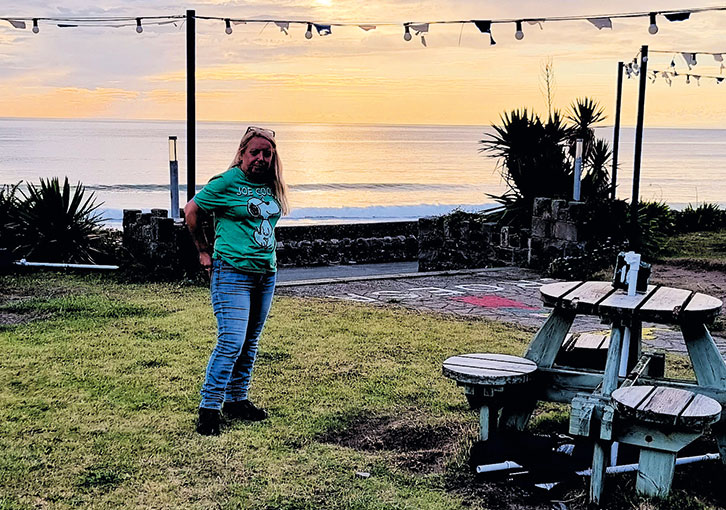
The vibrant display in the skies above was accompanied by the sound of waves breaking on the shore, the ripples bringing alive the reflected colours.
Then it was time for us to swap beaches and camping pitches, and sunsets for moon rises. I had read so many good things about the views from the tip of the Llŷn Peninsula that we decided to spend our final few days checking them out. So we drove 50 miles from Barmouth to Dwyros Campsite.
We had thought to visit Portmeirion, the village built by Sir Clough Williams-Ellis in the Italianate style and famous as the setting for the 1960s TV series The Prisoner, as our route took us past, but sadly, no dogs are allowed, so we continued on the short journey to our next temporary home.
The far west of Wales
The Visit Snowdonia website describes this area as “Land’s End at its most idyllic” (it’s about as far west as you can go in mainland Wales) and we had the perfect spot from which to admire it in Dwyros Campsite.
Relaxed and friendly, with excellent amenities, yet retaining the feel of ‘real’ camping, our stay was thoroughly enjoyable.
Set above the small fishing village of Aberdaron, a five-minute walk away down the hill, it affords great views over the bay and out to Bardsey Island. Legend has it that Bardsey is the resting place of 20,000 saints, and it has been a renowned place of pilgrimage for centuries.
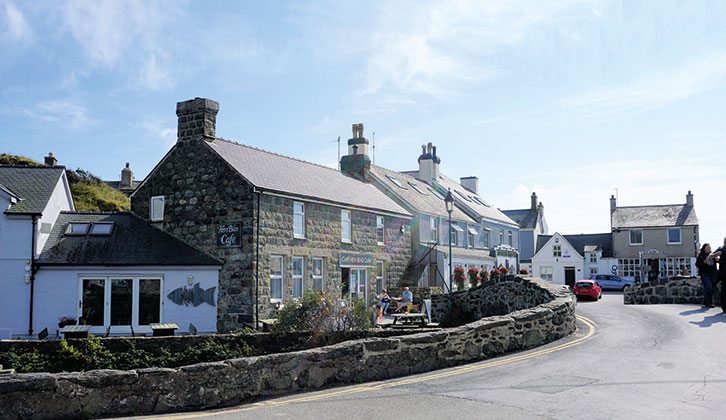
Here, there is no need to spend money on attraction entrance fees or expensive dinners – the landscape and the beach provide everything you need for free.
If you do want to treat yourself to a pint or a bite to eat, the village has a bakery and café for lunchtime snacks, a fish & chip shop, and two pubs, which both cater for a relaxed dinner right by the seaside.
There’s also an interesting little church in the village. St Hywyn’s was an important destination for medieval pilgrims, but this has been a place of worship since 516 AD.
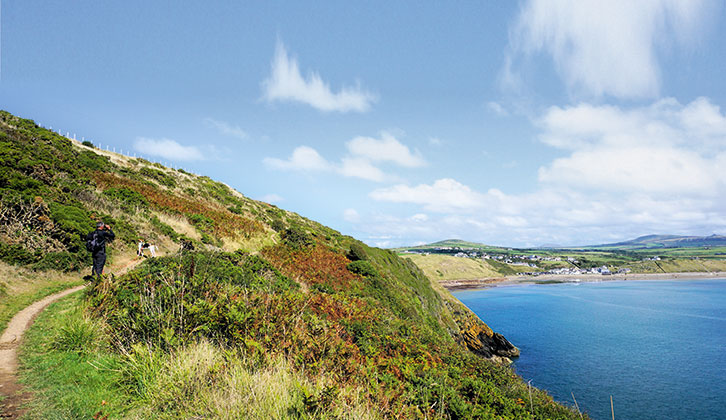
During the 11th century, the stone church was built for pilgrims journeying on their way to Bardsey Island. Today, as well as still welcoming worshippers, it is a popular attraction for its enviable clifftop location, overlooking the sea below.
Moon rising
We spent our first day there just wandering around the village, getting sand between our toes on the beach and peering into rock pools (there are designated areas on the beach that
allow dogs until the end of September).
We also enjoyed a drink on the terrace of the Gwesty Ty Newydd Hotel, and the fine views over the beach.
Back at the campsite, when the sun went down, the views got even better. We were lucky enough to be there to witness a full moon, which rose slowly, quietly, in front of us. I imagined I could see into every crater, it was so very clear. It was quite hard to believe this was the same moon that lights up my garden at home.
Next day we donned walking boots and set off, in glorious late summer sunshine, to hike a section of the Wales Coast Path, armed with binoculars to seek out those rather elusive dolphins.
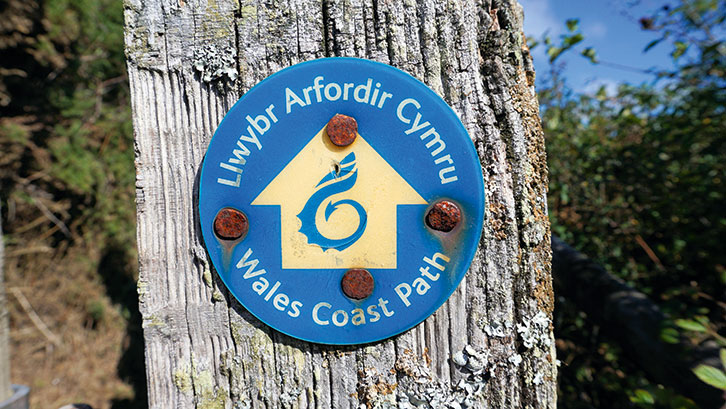
Coastal pathway
This superb hiking trail runs the entire length of the coast of Wales, covering around 870 miles. We walked just a tiny portion, but it was inspiring, and we are determined to see, and walk, much more of this gorgeous coastline. We didn’t spot any dolphins in the end, but we did have the company of a seal, which bobbed along in the water for a while.
Returning to Aberdaron tired but exhilarated, we felt that we deserved a little liquid refreshment before our fish & chip supper at Sblash, so we dropped in at the second pub in town, The Ship Hotel, for a pint of local ale. They also let us take our drinks with us to the chippy (almost next door), where they don’t serve alcohol, but are happy for you to bring your own.
After dinner, we took the short (steep) walk back to our pitch, to watch the moon rise over the bay as we reflected on a highly enjoyable, budget-friendly trip to a part of the world we want to revisit – we just have to work out when the moon will be full!
When to go to the Llŷn Peninsula
September is ideal, with plenty to enjoy in the area and the weather remaining sunny and warm
Where we stayed in the Llŷn Peninsula
Hendre Mynach Touring Caravan and Camping Park
Llanaber Road, Barmouth LL42 1YR
Aberdaron, Pwllheli LL53 8BS
Food and drink
- The Last Inn, Barmouth
- Min Y Mor Hotel, Barmouth
- Gwesty Ty Newydd Hotel, Aberdaron
- The Ship Hotel, Aberdaron
Find out more
- Visit Barmouth
- Harlech Castle
- Fairbourne Steam Railway
- Portmeirion
- Visit Snowdonia
- Visit Aberdaron
- Bardsey Island
- Wales Coast Path
Lead image: Sue Taylor
Head to our Best of British: Touring Adventures section for more inspiration for your next trip.
If you’ve enjoyed reading this article, why not get the latest news, reviews and features delivered direct to your door or inbox every month. Take advantage of our brilliant Practical Caravan magazine SUBSCRIBERS’ OFFER and SIGN UP TO OUR NEWSLETTER for regular weekly updates on all things caravan related.
